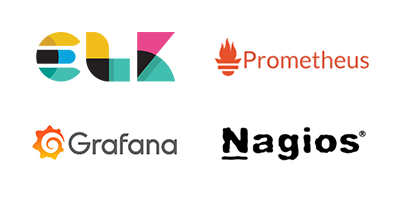CI/CD pipeline
A fast and reliable CI/CD pipeline is decisive for doing software development process quiescently over time.
Do you want your software development team to stay focused on writing code and supply error-free code at a high velocity? Want to avoid manual bugs, provide standardized development feedback loops and grant rapid product iterations?
Make your product updates smoothly and less stressful through our seasoned team of DevOps engineers.

What is CI/CD
Continuous integration, delivery, and deployment, better known as CI/CD, is an integral part of the modern approach to development process intended to reduce errors during integration and deployment while increasing project velocity. By implementing these ideas into your practice, you can reduce the time required to integrate changes for a release and test each change before moving it into production.
What are the differences between continuous integration, continuous delivery, and continuous deployment?
Continuous integration
speeds up the release process by enabling teams to find and fix bugs earlier in the development cycle giving a possibility of collaboration between developers – making it a crucial practice for agile teams.
Continuous delivery
is all about the ability to regularly deliver integrated code to production. It means that your builds are ready to go in only one click, in case you want to release them.
Continuous deployment
goes one step further since it allows to automatically deploy live every main branch change that passes successfully the continuous deployment.
CI/CD tools and services
Why CI/CD Matters: Building Efficient Automation Pipelines
CI/CD is a key stage of building an effective pipeline to automate the build, integration and testing processes
Performance monitoring of application
We use different tools to monitor application metrics before and after deployment itself to make sure application works in an appropriate way and there is no performance degradation


What top CI/CD tools?
Choosing the best CI tool depends on your environment. Success is rarely determined by a tool. You should consider such points while choosing the tool for your project:
- Do you need an endlessly extensible open source solution that you’re willing to learn?
- Would you rather pay upfront for a commercial solution geared to increase usability?
Jenkins and TeamCity are both great continuous integration tools. They’ll help you to reduce risks, spot buds at the early stages of the development, automate processes, organize better collaboration in a team. But your choice depends only on your business needs and your preferences.
How CI/CD pipeline works?
CI tools show the information about the current state of the sources in the system. If the last build failed, we can not take the latest version of source code, and the program shows who made a mistake, so this build could be fixed quickly. In this environment the highest priority task is to fix the build. The benefits are evident: the more often you build and test during development, the less you have to worry about the quality of the product. Continuous building and testing make the go-live date just another routine deployment.
What is a CI Server and Why Do We Need It?
Imagine a team of developers creating a large computer program. Each developer writes their own part of the code. For everything to work together, you need to constantly check that new pieces of code don’t “break” what’s already working.
A CI server (or Continuous Integration server) is like the main conductor in an orchestra of developers. Here’s what it does:
- Monitors shared code: All developers store their code in one place (this is called a “repository”). The CI server constantly keeps an eye on this repository.
- Automatically checks changes: When a developer adds new changes to the code, the CI server immediately starts an automatic check (this is called a “build”). It checks for errors and ensures everything works as it should.
- Reports results: After the check, the CI server sends the developer an email with the results. If something went wrong, the developer finds out right away and can quickly fix the error.
Why is this necessary? Most modern teams that create software use CI servers because it makes development much faster and simpler. Thanks to the CI server, errors are found and fixed very quickly, rather than accumulating and turning into big problems.
Latest projects
Bring your unique goal and we’ll drive continuous value to your end users.











